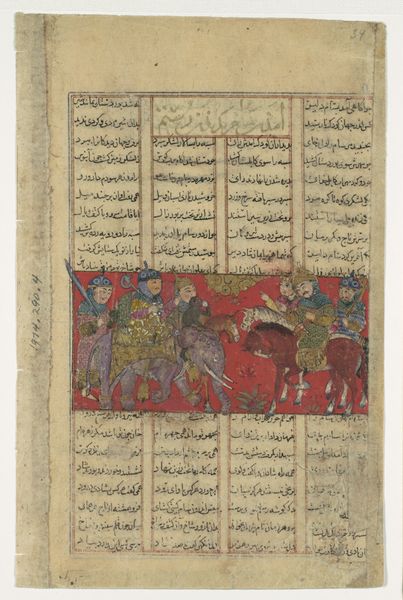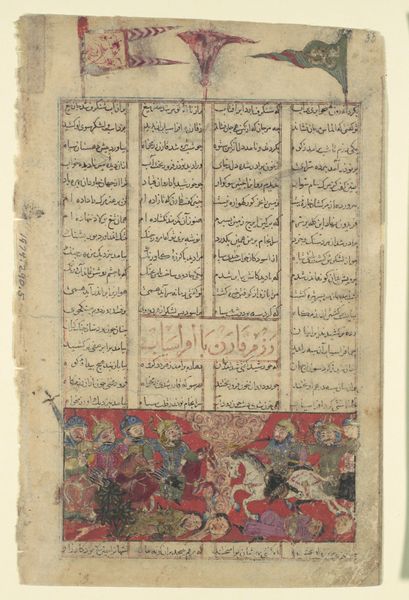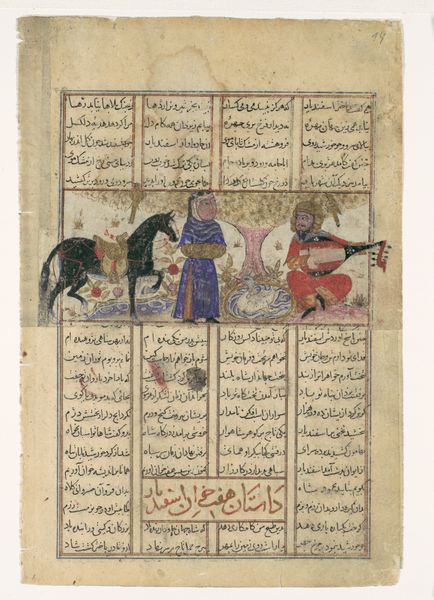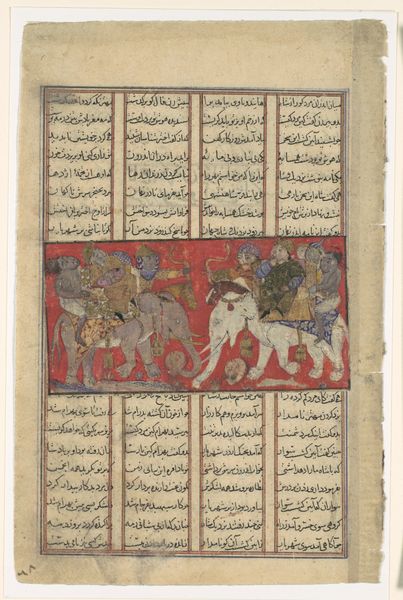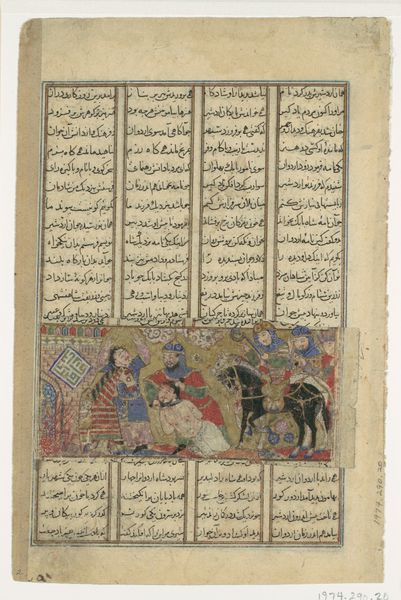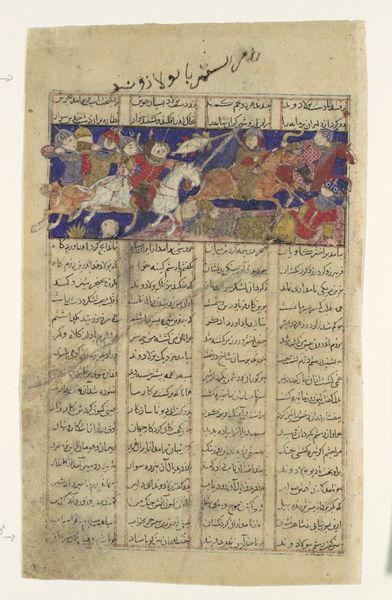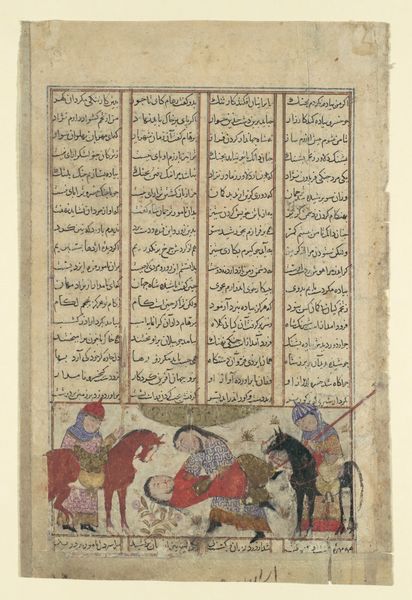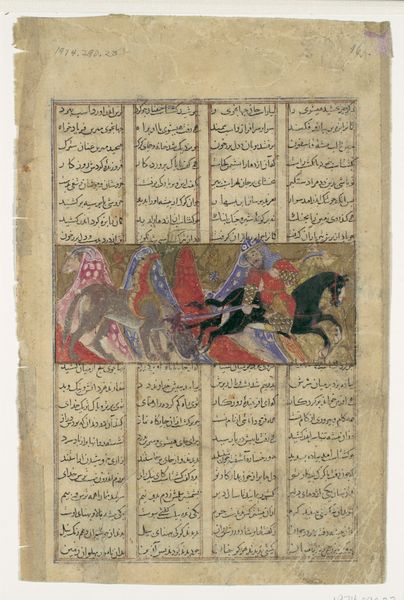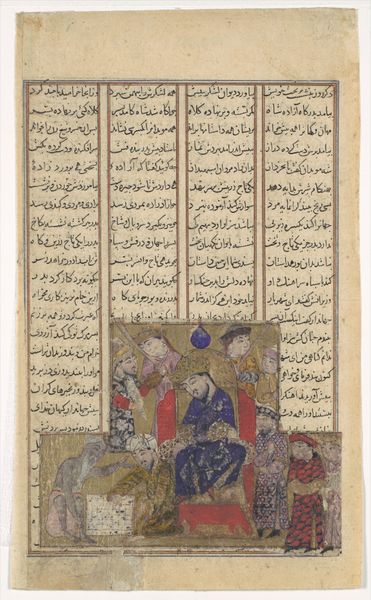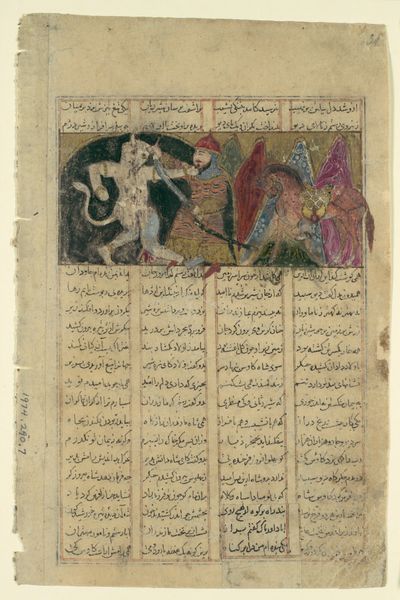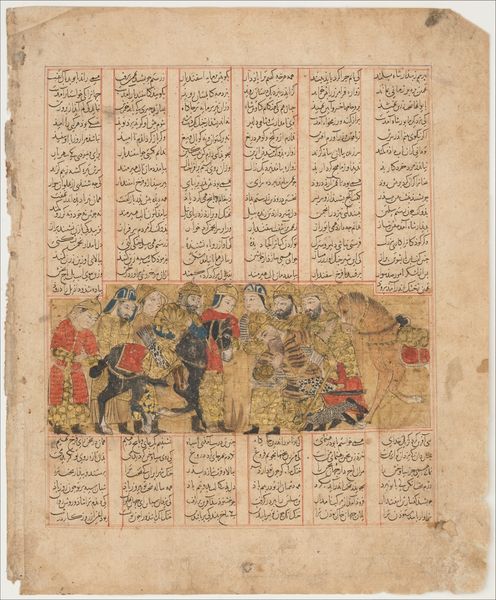
"Rustam Captures the Shah of Sham and the Shah of Berber", Folio from a Shahnama (Book of Kings) of Firdausi 1305 - 1365
0:00
0:00
mixed-media, painting, paper, ink
#
mixed-media
#
narrative-art
#
painting
#
landscape
#
figuration
#
paper
#
ink
#
coloured pencil
#
islamic-art
#
mixed media
#
miniature
Dimensions: Page: H. 8 1/16 in. (20.5 cm) W. 5 1/4 in. (13.3 cm) Painting: H. 1 7/8 in. (4.7 cm) W. 4 1/4 in. (10.8 cm)
Copyright: Public Domain
Curator: "Rustam Captures the Shah of Sham and the Shah of Berber," dating from 1305-1365. It's a mixed-media work on paper, housed at the Metropolitan Museum of Art. At first glance, I see a dynamic scene with lots of figures on horseback. The colours are rich but also quite earthy. What strikes you? Editor: I’m drawn to how compact everything is. It’s busy, but contained within the text framing it. The horses almost seem to leap off the page, but it feels a little static too. How do you interpret this work within its cultural context? Curator: Think about this piece as less a standalone image and more as an integral part of the "Shahnama," the Persian "Book of Kings." It visualises a narrative of power, conquest, and cultural identity, especially concerning Iranian identity, at a turbulent moment in history. Rustam’s capture of the Shahs isn't just about a battle; it's about dominance, authority, and the assertion of a particular cultural narrative. How do the figures’ expressions or costumes strike you? What narratives are visibly displayed here? Editor: Well, their faces are very similar, but some wear different helmets, maybe marking rank. The costumes have intricate detail suggesting power and authority. How might we read the artistic choices—the composition, say—as contributing to these themes? Curator: Exactly. The layering and crowding contribute to a sense of overwhelming power, almost a propagandistic rendering. Now, consider the use of miniature. Does this suggest something about courtly patronage and identity, or challenge a traditionally accepted worldview? Editor: That’s interesting. It makes you think about who this book was made for and what kind of message it was supposed to convey. I never really considered miniature as propaganda, it feels quite strange to use this word about something so precious. Curator: It shows us that art history and contemporary theory help broaden and sharpen our reading. Thank you for sharing your ideas with me! Editor: Thank you! This really changes my perspective on these miniatures.
Comments
No comments
Be the first to comment and join the conversation on the ultimate creative platform.
